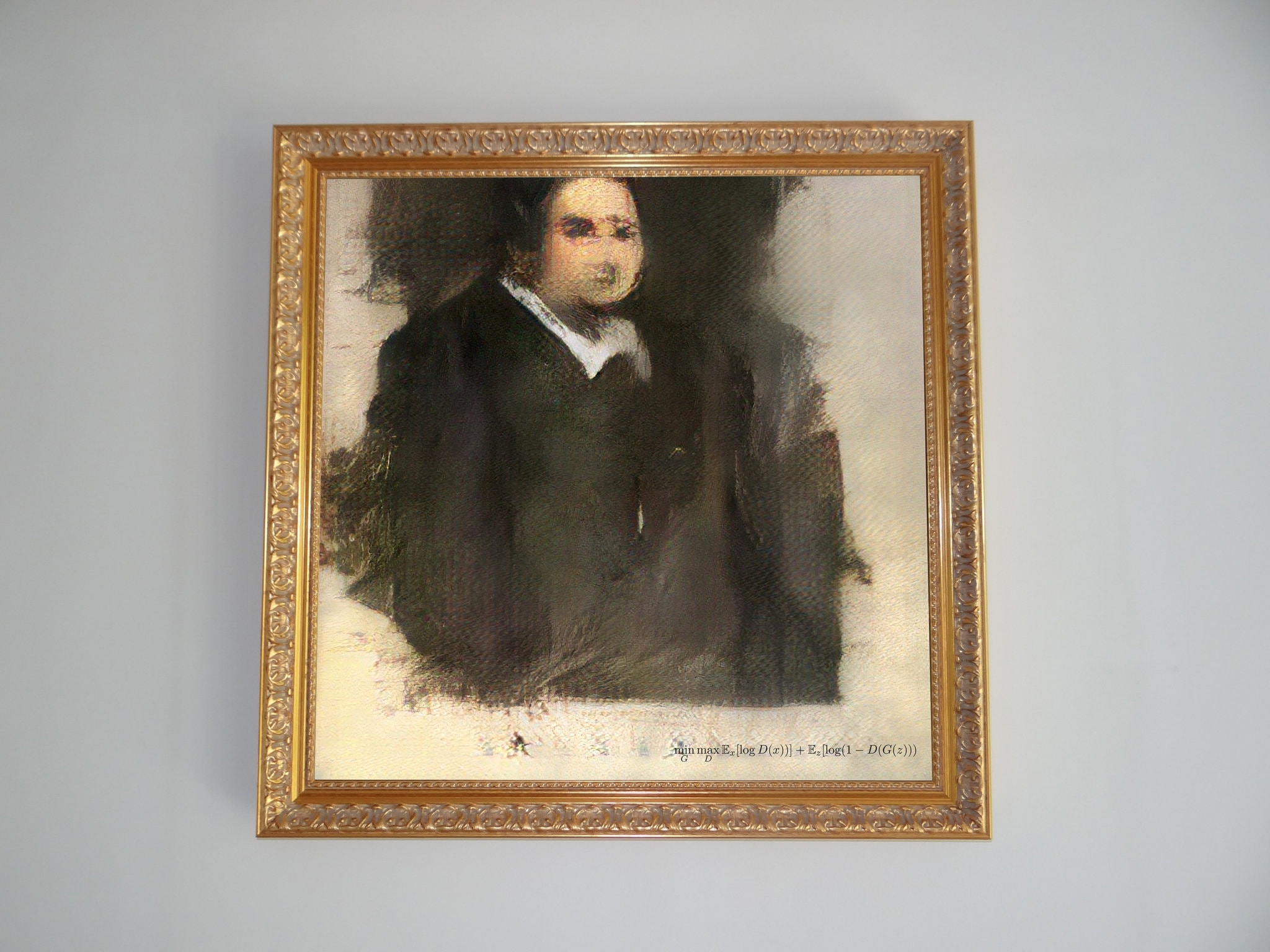︎What I’m Working On︎Bobby Berry︎What I’m Working On︎Bobby Berry︎What I’m Working On︎Bobby Berry

Edmond de Belamy, from La Famille de Belamy, by the French art collective Obvious, was sold on Thursday at Christie’s New York. Image from Christie’s.
What I’m Working On
Bobby Berry
Bobby Berry
Is there a marketplace for AI art?
Yes,
Of course,
The artwork Edmond de Belamy, from La Famille de Belamy, by the French art collective Obvious, sold for $432,500.
This rhetorical conversation has been reiterated to me frequently while sorting through articles on the internet.
And though the half million-dollar sale is indeed fact, I find the above response to be contextually anemic.
Market value is a slippery entity, especially in the arts.
Oftentimes, the determinant of value is as much context as the artwork's quality.
This of course draws the question whether context is actually distinct from "artistic quality"—
but I am starting to digress.
Here, for the sake of simplicity, we are talking only about market value.
So: why has this portrait been able to sell for such a sum?
(Here, I should provide a disclaimer that this is only my interpretation.)
Edmond de Belamy, from La Famille de Belamy—though it is an AI-generated artwork—is, in a broader sense, a historical artifact.
It is “The First” AI-generated artwork, a title granted by the larger forces/entities within the market that publicized its sale:
To be “The First” is to be privileged by history
To be “The First” is to be an iconoclast
To be “The First” is to be cutting edge
The work has been transmuted by circumstance, now a symbol of a larger agenda.
AI is novel, fetishized as the power that will revolutionize society. Just as it shapes aspects of our daily and social lives online, some wish to see it legitimized as a form of artistic expression.
At the risk of sounding conspiratorial, the very fact the work was being auctioned in such a publicized manner speaks to the larger agenda set forward by its sale.
The portrait is now the champion of the AI-tech-art movement, its commercial success now a rallying point.